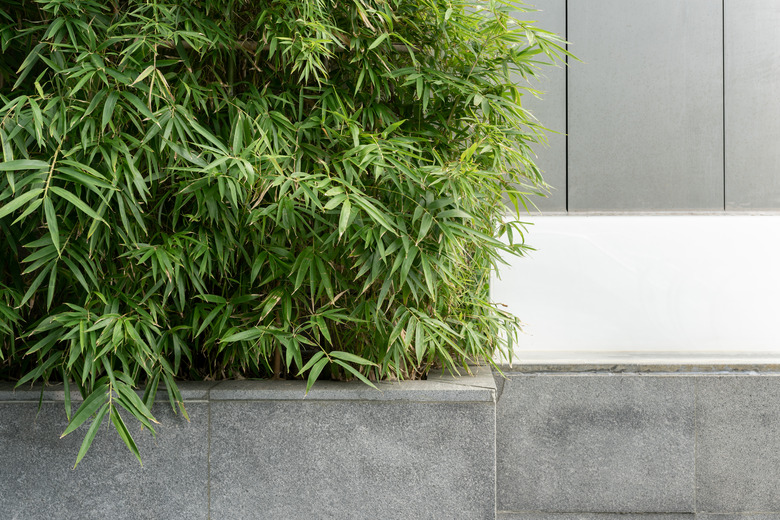What Herbicides Will Kill Bamboo?
If you've ever stood next to bamboo (Bambusa spp.), you're fortunate to have heard them singing. The songs of the bamboo are one of the most pacifying sounds coming from nature and represent the joy of life that bamboo brings—unless your bamboo is running out of control.
Bamboo: The Fastest Growing Plant on Earth
There are over 1,000 species of bamboo, all belonging to the Poaceae family and Bambusoideae sub-family. Versatile in its growing zones, you will find bamboo species growing in USDA plant hardiness zones ranging from 3a to 10b.
The fast-growing bamboo can quickly take over a garden or total landscape, and while it looks like a tree, it is actually an evergreen grass. It is the fastest-growing plant on Earth, reaching approximately 1 meter each day. It is considered a sustainable resource because of its ability to reproduce itself without manual intervention, but herbicides are necessary to control its growth.
Bamboo imported from its origin countries in Asia, East Asia and China is extremely invasive. Native bamboo, also known as canebrake bamboo (Arundinaria gigantea) is a giant river cane and was culturally and economically important to America's indigenous people. It is relatively easy to control and maintain, says the University of Florida IFAS Extension.
Warning
Do not apply general herbicides if the bamboo is growing near the water. Choose one that is labeled "for use near water," says the Clemson Cooperative Extension.
Controlling Running Bamboo With Herbicides
If your bamboo is of the "running" type, this means that its underground root system, known as rhizomes, spreads quickly underground and branches up to 15 feet away from its source. A threat to other landscape plants and even the neighbor's garden, property owners are threatened with legal action in some places if they do not contain their running bamboo, according to Fairfax County Virginia.
Glyphosate and Triclopyr
Cutting the bamboo down to the ground is only the beginning of controlling the growth. Herbicides with glyphosate or triclopyr need to be applied to the stump immediately—and if leaves sprout from that stump, additional applications must be applied to the leaves so they can absorb the herbicide. It may take up to five years to fully kill the bamboo using this method. Glyphosate is only effective through the leaves of the bamboo, not the root system.
Just make sure you follow the directions on the label for whatever herbicides you choose to apply.
The Importance of Frequent Mowing
If running bamboo is growing in your landscape, frequent mowing helps reduce its growth. If you are applying herbicides, wait until the leaves die before you mow.
Digging a trench and installing a barrier to prevent the rhizomes from wandering is another option.
If all else fails, bring in the heavy equipment to rid your landscape or woods of the running bamboo.
Tip
Spray some herbicide on your rubber gloves and run your hands over the bamboo leaves. The herbicide will eventually kill the bamboo.
Controlling Clumping Bamboo
Whether your clumping bamboo is growing in a container or in your landscape, it is not difficult to control. Just snip off any new shoots at the soil level and you're finished with your maintenance duties until the next spring, according to Missouri Botanical Garden.
This active period of growth lasts for only about two weeks in the spring. The rhizomes of clumping bamboo are very short and don't wander like those of running bamboo.
Stopping Bamboo From Spreading
Whether it's the running or clumping variety, bamboo is best controlled by planting it in a container. The walls of the pot work as a natural barrier to out-of-control rhizomes of the running bamboo, and snipping off the new growth of clumping bamboo is an easy task. Neither method requires mowing or heavy equipment.
